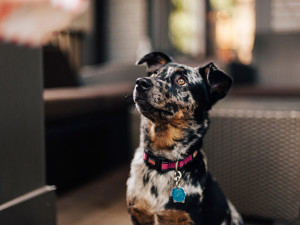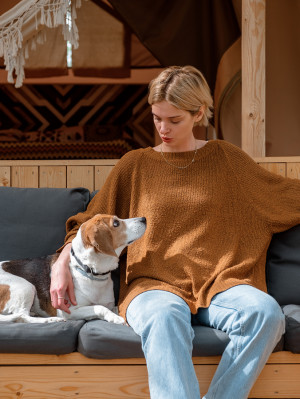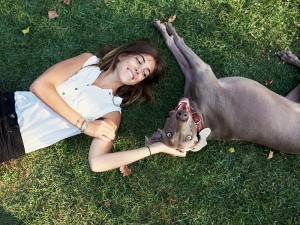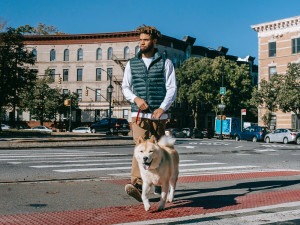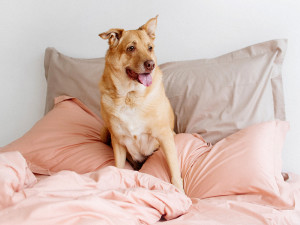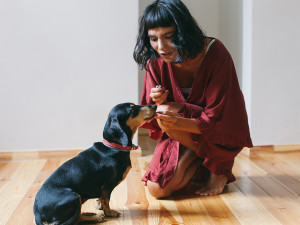How to Teach Your Dog Your Name
Your dog might not know your name. Don’t take offense; just play this game.
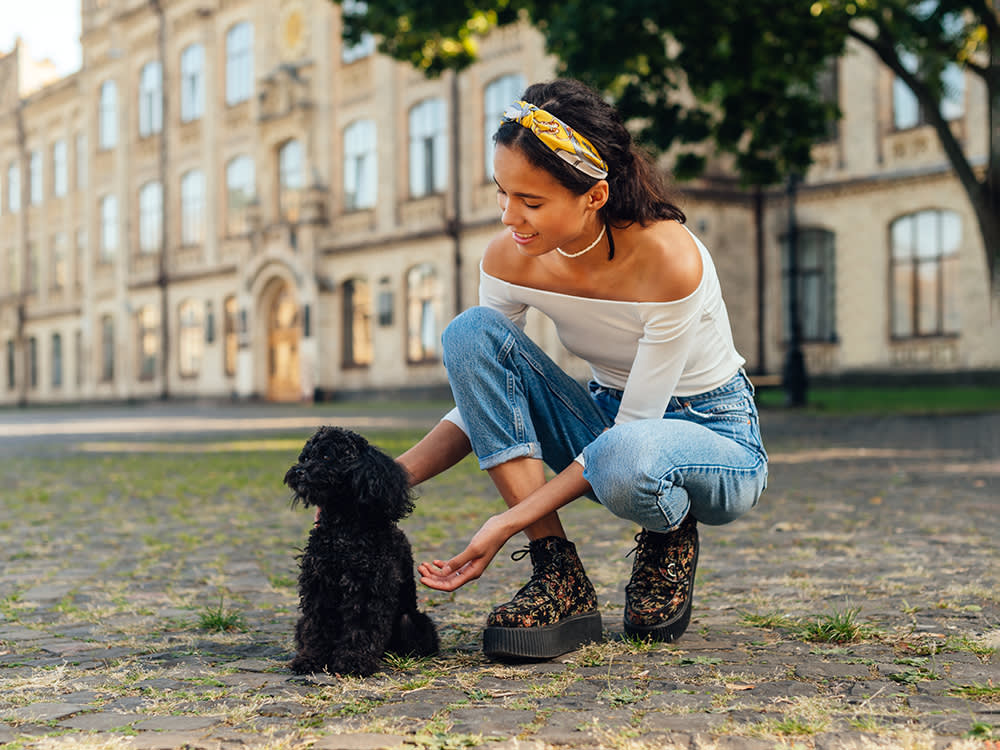
share article
Many dogs already know the names of the humans they live with; it’s only natural that they notice that certain words go with certain people. When you think about it, we humans use each other’s names a lot — saying “hello,” getting each other’s attention, and calling out into the void to see if someone is around. We also tend to announce someone’s arrival, as in, “Josh is home!” So, it’s possible your dog already knows your name (and the names of your family members). But if they haven’t seemed to catch on, there’s an easy — and fun — way to teach your dog human names.
Play the game “Family Circle”.
One of the easiest ways to teach a dog the names of everyone in the family is with a game called Family Circle. Here’s how you play:
Sit in a spread-out circle with at least two other people.
Have one person in the circle — say, for example, someone named Josh — ask, “Where’s [your.name]” — for example, “Where’s Karen?” (that’s me).
After Josh says your name, call the dog to come to you.
If the dog comes to you, give them a treatopens in a new tab or other reinforcement. If they go to someone else, ignore them.
Then, it’s your turn to cue the dog on where to go: ask, “Where’s Josh?”
Josh calls the dog.
If the dog goes to Josh, they get reinforced.
Josh cues the dog — and so on.
Keep in mind that this game works best with at least three people. With only two people, the dog may learn that the correct response is to go to the person who did not just say “Where’s...?” without necessarily learning names.
Next, up the difficulty level.
In the early stages of training your dog to play Family Circle, they should always be told the name of the person they must go find and hear that person call them to come. The person should also be within sight of your dog. Later, as your dog becomes more competent, the cue “come” can be dropped, and later still, the game can be played when the person they must find is out of sight.
There are many practical applications, including in the event of a lost person, or even when someone has just gone out of sight or earshot briefly. It also teaches dogs to find the person in response to the cue and gives them great practice with their recallopens in a new tab. Among the other benefits: The dog can get physical exercise without their parents having to move, and it can help keep a dog occupied mentallyopens in a new tab when you’re too busy to engage in more active play. Win-win.

Karen B. London, PhD, CAAB, CPDT-KA
Karen B. London, Ph.D., is a Certified Applied Animal Behaviorist and Certified Professional Dog Trainer who specializes in working with dogs with serious behavioral issues, including aggression, and has also trained other animals including cats, birds, snakes, and insects. She writes the animal column for the Arizona Daily Sun and is an Adjunct Professor in the Department of Biological Sciences at Northern Arizona University. She is the author of six books about training and behavior, including her most recent, Treat Everyone Like a Dog: How a Dog Trainer’s World View Can Improve Your Lifeopens in a new tab.
Related articles
![Woman laying on the grass smiling at her dog]() opens in a new tab
opens in a new tabHow to Make Your Dog’s Life Better
Number 6 will probably surprise you.
![Man walking his dog in the city]() opens in a new tab
opens in a new tabThe B.A.T. Dog Training Method Is What’s Up
Behavior Adjustment Training (B.A.T.) will keep your dog calm in any situation. For real.
![Adult dog sitting on a bed]() opens in a new tab
opens in a new tabThe Rule of 3s — Learn About Your Rescue Dog’s Major Milestones
What to expect in the first three days, three weeks, and three months.
![woman gives small black dog treat for sitting]() opens in a new tab
opens in a new tabYour Dog Should Do This 30-Day Training Challenge
It’s like your 30-day yoga challenge — except with way more training treats.
